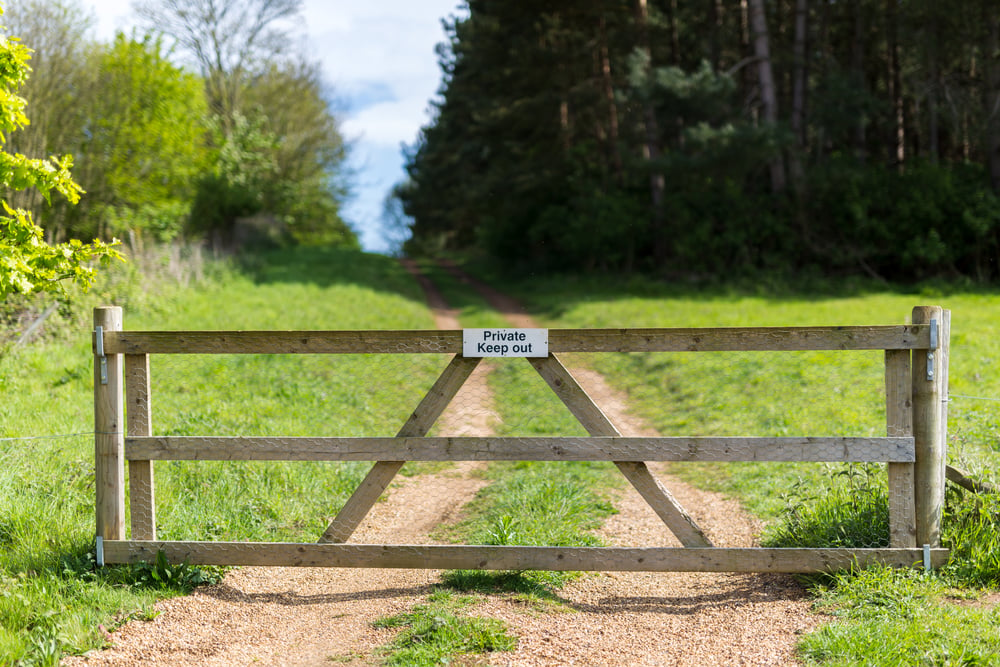
Easements come in many forms and often are created by a municipality. But what if you need to get an easement? How does that work?
Maybe your neighbor needs to share part of your driveway, or you want to provide a common path to a pond behind your property. You may need to grant an easement.
Here is an overview of easements, in all their variety, and an explanation of how you can get one in Texas.
Easement Overview
An easement is a legal method of granting the right to someone else to use your land. The easement may be for utilities, in which case it is more taken than granted. Alternatively, you may grant the easement for some reason.
Sometimes known as an easement deed, easements can be affirmative or negative.
- Affirmative easement - allows the easement to be used for whatever the easement rights holder wants.
- Negative easement - restricts the exact use of the easement.
Easements not only allow another person, who is not the landowner, to use that piece of land, but it also protects that person from interference in the use of the easement. On the other hand, an easement does not allow anyone but the property owner to profit from the land. In the case of mineral rights, those remain with the owner and are not granted with the easement.
A private easement that you, as a property owner, might grant, can be an easement in gross or an easement in appurtenance.
Easement in Gross
An individual or business owns the easement. Things like pipeline easements are in gross. It’s a personal right that cannot be reassigned or transmitted to another party. When the easement owner dies or goes out of business, the easement rights end unless those rights were granted in writing.
Easement in Appurtenance
An appurtenant easement attaches to a particular tract of property instead of a person or business. A dominant estate and a servient estate must exist to grant an appurtenance easement. The owner of the dominant estate has the right to use the easement across the property of a servient estate owner.
Creating a Private Easement
You can create a private easement in one of several ways. Most require written, tangible evidence prescribed by the state or local property code. Some requirements may be waived if the person claiming the easement has paid for it in cash or services, started using the easement, and has made valuable improvements to it.
An implied easement, also known as an easement by implication, is created by reservation or grant, and by way of necessity.
- By reservation or grant - requires a prior existence and use of an easement. Also, the prior use must have been apparent, permanent, necessary, and continuous.
- By way of necessity - does not require prior existence or use of the easement. An easement exists because there is no other way to enter or leave the property.
By way of necessity brings us to a concept known as a statutory easement for landlocked property.
In Texas, the transportation code allows a landlocked property owner to request a public road across private land. The landlocked owner approaches the commissioner's court with a sworn application and must provide notice to any other affected property owner.
The commissioner’s court has a hearing to determine if the landowner is truly landlocked with no other egress or ingress to the property except by easement. If all requirements are met, the court orders the establishment of a public road. However, the court is not required to do so.
If a public road is granted, the county pays the costs of opening the road, making it initially suitable for use as a public access road, but otherwise, the county is not responsible for subsequent road maintenance.
Other ways to obtain an easement for the landlocked property include obtaining an express easement from a neighbor or determining if you can obtain an easement by necessity.
- Express easement - the easiest method of gaining access to landlocked property. An express easement must be granted in writing, signed by the grantor, explicitly identifying the property and details of the easement use, and filing with the county records. The grantor may or may not require compensation for granting the easement.
- Easement by necessity - Texas law recognizes an easement in specific circumstances when it is necessary to cross another property owner’s land. Easement by necessity requires proof from the individual seeking the easement.
If you seek easement by necessity, you must prove
- That you owned the landlocked property at some time as well as the tract across which you seek access. This is called unity of ownership of the alleged dominant and servient estates prior to severance.
- The claimed access is necessary, not merely a convenience.
- The necessity existed at the time of the severance of the two estates.
Granting an easement doesn’t have to be permanent.
Terminating an Easement
An easement can be terminated by operation of law, merger, or limitations.
- Termination by operation of law - if, at a foreclosure under deed or trust created before the easement, the mortgagee is estopped to deny or be deemed to have ratified the public easement, as shown on the plat, by knowledge of the sale and partial release of platted lots.
- Termination by merger - the owner of the easement obtains title to the servient estate, extinguishing the easement.
- Termination by limitations - another takes adverse possession of the servient estate.
Other ways of easement termination are abandonment and expiration. If the easement ceases to be used for the purpose required in its granting, the easement ends. An easement designed by the terms of the agreement to last for a specified time will end at the end of the contracted period.
Easements are handled differently between states. If you find you need to obtain an easement in Texas, check state law. If you are landlocked and can prove it, you might get an easement through the commissioner's court. Or you can approach the landowner to ask for an express easement.
In any case, placing the requirements, use, and purpose of the easement in writing can later mitigate the chances of a lawsuit for trespass or adverse possession.
To learn if easements exist on your land or land you’re thinking of buying, take a look at our databases at CourthouseDirect.com, where you can look up deeds, review plats, and obtain any needed documents.























